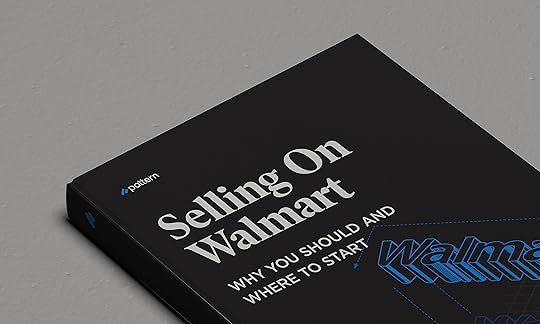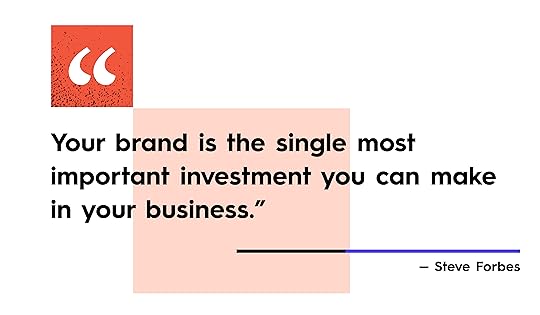Build Your Brand Strategy in 3 Steps

A strong brand identity doesn’t happen overnight. You can’t just pick a few colors and haphazardly slap a logo together. You need to approach your design strategically to build an identity that truly reflects your brand—and can support you as you grow. This requires deep thinking, a team with strong communication and design skills, and an intimate understanding of who you are, what you do, and how you want to present your brand to the world.
This work isn’t easy, but it’s some of the most important work that any brand can do. So if you’re going to do it, you might as well do it the right way. Of course, tackling a brand identity can be both intimidating and confusing. What should it include? How do you start? Who needs to be involved?
Don’t worry. With the right guidance, you can move through the process effectively, and that’s why we’re here. To make it easy, we’ve broken it all down into this simple step-by-step guide, including our best tips and handy toolkit to help you along the way. Follow this guide and you’ll end up with a beautiful, functional brand identity that will help you outshine your competition, connect with the right people, and tell your brand story through every piece of content.
Table of ContentsWhat Is a Brand Identity?Branding pro Marty Neumeier defines a brand identity as “the outward expression of a brand, including its trademark, name, communications, and visual appearance.” To us, a brand identity is the sum total of how your brand looks, feels, and speaks to people. (Sometimes that even includes how it sounds, tastes, feels, and even smells.)
A strong brand identity is not about making pretty packaging; it’s about communicating your brand story effectively. Design is a powerful tool that can transform how people interact with your brand in three important ways.
Differentiation: How can you stand out in a crowded marketplace? Your brand identity can play a strong role. Whether you want your product to stand out on a shelf, or you want your ads to stand out on Facebook, creating a consistent, cohesive presentation is the secret to success.Connection: The more effectively you communicate who you are, the easier it will be for people to engage with you and, ultimately, join your community of lifelong fans.Experience: Everything you create reflects your brand. Thus, if you want to create a consistent, cohesive brand experience, you need to present a consistent, cohesive identity. From your website, to your social media, to your sales brochures, a strong identity is the key to elevating your brand experience.Some brands elevate brand identity to an art (think Apple , LEGO , or Levi’s ). Some brands make it their entry into the playing field (think Warby Parker or Casper ). Others struggle because they don’t know who they are or don’t know how to communicate it effectively. (The truth is too many brands fall into this camp.)

Your brand strategy is your company’s approach to building and maintaining a brand that resonates with consumers. Brands may achieve this goal through various means, but the core goal remains the same: creating and communicating a strong, familiar brand that fosters a loyal customer base.
The first step of brand strategy is to mindfully create a brand. We don’t mean creating a product or business—a brand isn’t just a company, logo, color, or name. A brand is how people perceive your company, logo, or name. It’s the implicit feelings wrapped around your product.
To create a brand that resonates with consumers, you should first understand who you are as a brand, who you want to be as a brand, and what your products stand for. You should also seek to understand your customer, what’s important to them, and why they need your product.
Next, develop a brand systemOnce you’ve established your brand, the next step in your brand strategy should be developing a brand system to ensure you’re successfully communicating your brand identity and values. One way to develop this system is by creating what we call a kit of parts full of different elements—written, visual, and graphic—that reinforce your brand. This may include iconography, typography, voice, colors, logos, and more.
It’s also best practice to provide a style guide, photo guide, brand guide, or other similar established guidelines for anyone who will be creating assets for or representing the brand. These guides should identify each piece of the brand and how they should be executed. Make sure that all employees, partners, agencies, and sellers follow these guidelines.
5 Steps to Building a Strong Brand Identity When the Game Is Constantly Changing

According to Brandwatch, the internet has approximately 3.17 billion users; 2.3 billion of them are active social media users-which is 176 million more than last year. 91 percent of retail brands are generally aware of this fact and use an average of 5 social media channels to grab the attention of all these folks.
The last decade (or hell, just the last five years) has seen an incredible shift in the way companies market their products; with social media, robust search engines, and access to mobile technology, we’re literally drowning in content-most of which slips right under the radar. And yet, content marketing is one of the main drivers of businesses today.
It’s a puzzling scenario for sure, but the simple explanation is that businesses succeeding in marketing are those with a clear, undeniable perspective. or in other words, a strong brand.
Some leaders will go to their grave proclaiming they know their business identity, but the truth is, their marketing efforts just aren’t paying off the way they should. And there’s no shame in that. Sometimes, when you’re too close to your business, it’s difficult to know the way it is perceived from the outside.
Experts like Raquel Baldelomar, Founder and Managing Director of Quaintise, and Matthew Dinnerman, Partner and Director of Strategy, help companies realize the strength of their brands every day. Quaintise is a Santa Monica, California-based branding, marketing, and PR agency that works with intricate business models to convey a brand’s message to the right target audience in a meaningful way.
“The first step is to determine where you stand in the marketplace and to understand who your customer is,” says Matthew Dinnerman. To do so, a company leader must uncover what is most important for driving growth and analyze how the product or service is actually viewed by consumers. Additionally, an in-depth competitor analysis – including a review of competitor websites, search engine optimization, brand identities and advertising – informs who they will compete with for market share, how to differentiate, and what strategies to employ.
Case in point. Clearpath, a Dayton, Ohio-based company that provides a digital pathology software solution for dermatologists, hired Quaintise to create its brand identity and marketing strategy. “We needed a strong identity that represented the revolutionary services the Clearpath technology offers the dermatology community,” says Clearpath Director Dan Angress. “We positioned the brand as a leader in the field by developing a corporate identity that illustrated its modern and streamlined technology. This showcases Clearpath’s value to customers.” Based on the branding effort, Quaintise has helped Clearpath increase web traffic more than 20% per month. In addition, Clearpath is now receiving a steady stream of leads from interested dermatology practices nationwide.
In order for a branding effort to be successful, a company must first identify its core philosophies, such as its mission statement and values. It’s also important to determine your brand’s value proposition to the consumer. This is the foundation of building a brand that truly represents your organization.
There are several ways to arrive at these strategy cornerstones. “We work closely with our client’s management, stakeholders and customers to analyze and condense gathered intelligence into descriptive messages that embody the company and brand’s meaning”, says Dinnerman. “We capture the essence of the company and brand though this process. We look for a unique and original voice to represent the brand.”
For example, there are constant changes in the online travel space, which is why brands need to establish an intrinsic value that will stand the test of time. This is something that Villaway, a luxury vacation rental marketplace for the jet set, partnered with Quaintise to do-build a brand that is distinctive and timeless. To that end, Quaintise developed the tagline: The Best Way to Stay. This tagline connects to Villaway’s core values, says Joe Liebke, CEO of Villaway. “The brand is built on the values that appeal to the most important constant in the luxury vacation marketplace-customer satisfaction.” The tagline goes hand-in-hand with creating an experience that is memorable and unique.
The next step is to create the look, feel, and voice of the brand that will be carried through all marketing channels – from the website, to social media, advertisements, and packaging. “A brand’s visual vocabulary will be reflected in your colors, fonts, logo and overall style,” says Raquel Baldelomar. The brand voice should be distinctive, resonate with your customers, be consistent and stay true to your company’s values.
Sources:
https://www.columnfivemedia.com/how-to-create-a-brand-identity/
https://pattern.com/blog/build-a-strong-brand-strategy/
https://www.inc.com/molly-reynolds/5-steps-to-building-a-strong-brand-identity-when-the-game-is-constantly-changing.html



